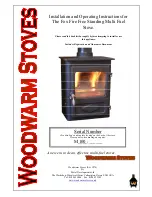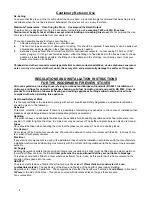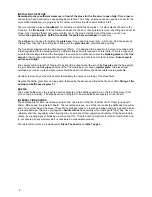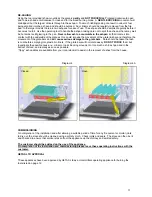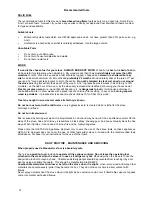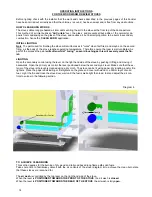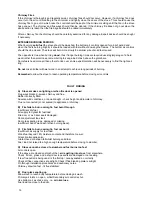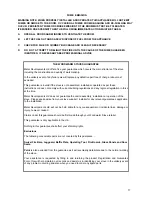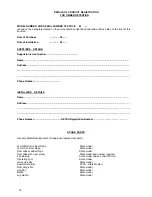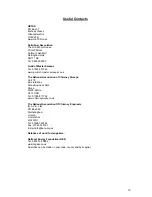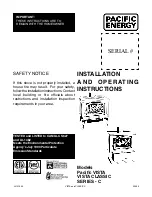
15
A) When lighting or refuelling the stove allow it to reach operating temperature every time, before attempting to close
the air wash control lever. The glass will get dirty if the stove body has not reached the optimum temperature first
and clean burn will not be achieved. We recommend that you use a magnetic surface-mounted
thermometer
(which can be purchased from your supplier or from ourselves) to achieve this.
Regard the primary air control like the choke on a car i.e. close them as soon as the stove is warm.
B) Leave the secondary air control open for about 20 minutes until the surface temperature of the stove body has
reached a temperature of 250-280
o
C (450-500
o
F), as shown by the thermometer. Slowly close the air wash lever.
Although use of the primary air control will increase the draw of the fire, prolonged or excessive use of this under
draught will cause dirtying of the glass, and can lead towards excessive over firing of the stove, therefore reduce
under draught as soon as is practical.
C )
When refuelling the stove,
first open the secondary air control to increase the draw of the fire and allow the
chimney to warm up, this will draw any smoke/fumes up the chimney when you open the main door. To maintain the
hot air flow from the front of the stove to the rear, drag any unburnt fuel to the front and add new fuel to the rear.
Try and keep the fuel at least 25mm from the door glass when the door is closed and repeat the procedure in B .
For recommended refuelling intervals see table 1.
Time spent now will reward you and remarkable results should be achieved. This will be even more apparent to you
if you have previously owned a conventionally draughted stove.
It will take a few loadings and firings before you become familiar with the air vents and amount of fuel necessary to
achieve the burning rate you require. Try to load the stove with fuel enough i.e. not too small a load and not too large
a load.
To be avoided at any time is loading the stove up and immediately closing all the air controls.
Air Bleed Control
A small air bleed hole adjustment is provided, it is located on the airwash flap on the back of the stove (diagram 9).
Its function is to allow you to “Set” the stove to the chimney draught. Open it fully and over the first couple of ex-
tended burning periods, monitor the result of your stove's slumber. If it fails to stay alight long enough, by burning
through all the fuel too quickly, reduce the setting until you are happy. When you are, tighten up the screw, so that
in future when you fully shut the airwash lever this hole will allow the stove to remain just open. Chimneys with a
high draw may require this small air bleed hole to be closed.
Air Bleed Hole
Diagram 9
Heat Shield
Summary of Contents for Fox Fire
Page 20: ...20 30 09 09...

